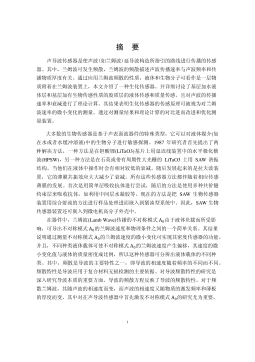纵向一体化视角下的我国移动通信产业
摘要随着移动通信技术的不断进步,全球很多国家已陆续推出3G服务,全球移动通信产业经历着剧烈的变革,一体化趋势明显。同时,移动通信产业标准不一,目前有四大标准WCDMACDMA2000,TD-SCDMA和WIMAX,各国考虑到自己的政治利益和经济利益,分别有所侧重,但为纵向一体化带来发展空间。我国也一样,当前正处于2G到3G的过渡时代,移动通信行业快速发展,新增用户基本稳定,在电信行业中的市场份额剧增。未来,我国电信运营企业将优先采用由我国大唐电信提出的TD-SCDMA标准。面对技术冲击和国家利益这样的大环境,我国的移动通信产业链纵向结构也将发生相当的变化。本文选取了纵向一体化这一角度对我国移动...
相关推荐
-
10KV电网D-SCADA 系统信息采集与故障诊断研究与设计VIP免费

 2024-10-14 49
2024-10-14 49 -
方形吸顶散流器平送风等温射流特性研究VIP免费

 2025-01-09 11
2025-01-09 11 -
关于充液声导波传感器中频散兰姆波的研究VIP免费

 2025-01-09 18
2025-01-09 18 -
结合梁斜拉桥施工过程中考虑剪力滞影响的分析方法VIP免费

 2025-01-09 26
2025-01-09 26 -
空调房间热舒适性的数值模拟与实验研究VIP免费

 2025-01-09 9
2025-01-09 9 -
汽车前轮线控转向系统研究VIP免费

 2025-01-09 13
2025-01-09 13 -
输入分配型混合动力车辆动力系统控制策略研究VIP免费

 2025-01-09 9
2025-01-09 9 -
双馈风力发电系统的柔性并网控制研VIP免费

 2025-01-09 35
2025-01-09 35 -
污水处理厂污泥好氧堆肥发酵技术的试验研究VIP免费

 2025-01-09 10
2025-01-09 10 -
应用风室试验装置的风机性能VIP免费

 2025-01-09 12
2025-01-09 12
相关内容
-

汽车前轮线控转向系统研究
分类:高等教育资料
时间:2025-01-09
标签:无
格式:PDF
价格:15 积分
-

输入分配型混合动力车辆动力系统控制策略研究
分类:高等教育资料
时间:2025-01-09
标签:无
格式:PDF
价格:15 积分
-

双馈风力发电系统的柔性并网控制研
分类:高等教育资料
时间:2025-01-09
标签:无
格式:PDF
价格:15 积分
-

污水处理厂污泥好氧堆肥发酵技术的试验研究
分类:高等教育资料
时间:2025-01-09
标签:无
格式:PDF
价格:15 积分
-

应用风室试验装置的风机性能
分类:高等教育资料
时间:2025-01-09
标签:无
格式:PDF
价格:15 积分






